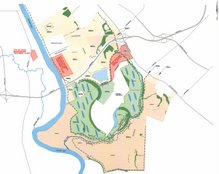Excess nitrogen in Lake Marion fuels the production of algae which, in turn, results in low levels of oxygen in the water. This creates an environment where fish and other aquatic animals cannot live. Additionally, high nitrogen levels cause other adverse conditions, including: blue baby syndrome, taste and odor problems in drinking water, increased risks of bladder cancer, and decreased water clarity. And Washington University researchers have found what they call a “warm gun” linking excess nitrogen and phosphorous to deformed frogs (too many or too few legs).
EPA has determined that the natural background level of nutrients in this region’s lakes is .02 mg total phosphorus per liter (TP/L) and .3 mg total nitrogen per liter (TN/L). SC DHEC has utilized these guidelines to place numeric nutrient criteria on Lake Marion which limits the levels of TP/L to .06mg and TN/L to 1.5mg.
Columbia Metro has most recently reported 24.6mg TN/L in its effluent discharged to the Congaree River. According to the EPA, this is approximately the same amount of nutrient pollution as barnyard runoff.
Friday, February 9, 2007
Subscribe to:
Post Comments (Atom)

No comments:
Post a Comment